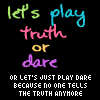Instructional design is the practice of arranging media to help learners and teachers transfer knowledge most effectively. The process consists broadly of determining the current state of learner understanding, defining the end goal of instruction, and creating some media-based "intervention" to assist in the transition. Ideally the process is informed by pedagogically tested theories of learning and may take place in student-only, teacher-led or community-based settings. The outcome of this instruction may be directly observable and scientifically measured or completely hidden and assumed.
As a field, Instructional Design is historically and traditionally rooted in cognitive and behavioural psychology. However, because it is not a regulated field, and therefore not well understood, the term 'instructional design' has been co-opted by or confused with a variety of other ideologically-based and / or professional fields. Instructional Design, for example, is not Graphic Design although graphic design (from a cognitive perspective) could play an important role in Instructional Design. Preparing instructional text by E. Misanchuk, and publications by James Hartley are useful to informing the distinction between Instructional Design and Graphic Design.
[edit] History
Much of the foundation of the field of instructional design was laid in World War II, when the U.S. military faced the need to rapidly train large numbers of people to perform complex technical tasks, from field-stripping a carbine to navigating across the ocean to building a bomber.
Drawing on the research and theories of B.F. Skinner on operant conditioning, training programs focused on observable behaviors. Tasks were broken down into subtasks, and each subtask treated as a separate learning goal. Training was designed to reward correct performance and remediate incorrect performance. Mastery was assumed to be possible for every learner, given enough repetition and feedback. After the war, the success of the wartime training model was replicated in business and industrial training, and to a lesser extent in the primary and secondary classroom.
During the later half of the 20th century, learning theories began to be influenced by the growth of digital computers. In 1955 Benjamin Bloom published an influential taxonomy of what he termed the three domains of learning: Cognitive (what we know or think), Psychomotor (what we do, physically) and Affective (what we feel, or what attitudes we have). These taxonomies still influence the design of instruction.
Many Instructional design theorists began to adopt an "information-processing" approach to the design of instruction. David Merrill for instance developed Component Display Theory (CDT). This influential theory concentrated on the means of presenting instructional materials (presentation techniques). Later in the 1980s and throughout the 1990s cognitive load theory began to find empirical support for a variety of presentation techniques.
[edit] Cognitive load theory and the design of instruction
Cognitive load theory developed out of several empirical studies of learners as they interacted with instructional materials (Sweller, 1988). It is emblematic of the historical roots of cognitive psychology in Instructional Design. Sweller and his associates began to measure the effects of working memory load and found that the format of instructional materials has a direct effect on the performance of the learners using those materials (Chandler and Sweller, 1991; Sweller and Cooper, 1985, Cooper and Sweller, 1987).
While the media debates of the 1990s focused on the influences of media on learning, cognitive load effects were being documented in several journals. These effects it seems were based on the design of instructional materials, as opposed to the media being used. Finally Mayer (1997) asked the Instructional Design community to reassess this media debate, to refocus their attention on what was most important – learning.
By the late 1990s, John Sweller and his associates had discovered several learning effects related to cognitive load and the design of instructional materials (e.g. the Split attention effect, redundancy effect, and the worked example effect). Later, other researchers like Richard Mayer began to attribute other learning effects to cognitive load (Mayer, 1997). Mayer and his associates soon developed a Cognitive Theory of Multimedia Learning (Mayer, 2001, Mayer, Bove, Bryman, Mars, and Tapangco, 1996; Mayer, Steinhoff, Bower, and Mars, 1995).
In the past decade, Cognitive load theory has begun to be internationally accepted (Paas, Renkl, & Sweller, 2004) and begun to revolutionize how Instructional Designers view instruction. Recently, Human performance experts have even taken notice of cognitive load and begun to promote this theory base as the Science of Instruction, with Instructional Designers as the practitioners of this field (Clark and Mayer, 2002). Finally Clark, Nguyen and Sweller (2006) published an important text describing how Instructional Designers can promote efficient learning using evidence based guidelines of Cognitive load theory.
[edit] Learning Design
The IMS Learning Design specification supports the use of a wide range of pedagogies in online learning. Rather than attempting to capture the specifics of many pedagogies, it does this by providing a generic and flexible language. This language is designed to enable many different pedagogies to be expressed. The approach has the advantage over alternatives in that only one set of learning design and runtime tools then need to be implemented in order to support the desired wide range of pedagogies. The language was originally developed at the Open University of the Netherlands (OUNL), after extensive examination and comparison of a wide range of pedagogical approaches and their associated learning activities, and several iterations of the developing language to obtain a good balance between generality and pedagogic expressiveness.
[edit] Instructional design models
Perhaps the most common model used for creating instructional materials is the ADDIE Model. This acronym stands for the 5 phases contained in the model:
Analyze - analyze learner characteristics, task to be learned, etc.
Design - develop learning objectives, choose an instructional approach
Develop - create instructional or training materials
Implement - deliver or distribute the instructional materials
Evaluate - make sure the materials achieved the desired goals
Most of the current instructional design models are variations of the ADDIE model. A sometimes utilized adaptation to this model is in a practice known as rapid prototyping. Proponents suggest that through an iterative process the verification of the design documents saves time and money by catching problems while they are still easy to fix. This approach is not novel to the design of instruction, but appears in many design-related domains including software design, architecture, transportation planning, product development, message design, user experience design, etc.
Instructional theories also play an important role in the design of instructional materials. Theories such as behaviorism, constructivism, social learning and cognitivism help shape and define the outcome of instructional materials.
[edit] Influential researchers and theorists
Lev Vygotsky - Learning as a social activity - 1930s
B.F. Skinner - Behaviorism - 1940s
Benjamin Bloom - Taxonomies of the cognitive, affective, and psychomotor domains - 1955
R.F. Mager - ABCD model for instructional objectives - 1962
Jean Piaget - Cognitive development - 1960s
Seymour Papert - LOGO - 1970s
Robert M. Gagné - Nine Events of Instruction - 1970s
Jerome Bruner - Constructivism
Dick, W. & Carey, L. "The Systematic Design of Instruction" - 1978
Michael Simonson - Instructional Systems and Design via Distance Education - 1980s
M. David Merrill and Charles Reigeluth - Elaboration Theory / Component Display Theory / PEAnets - 1980s
Robert Heinich, Michael Molenda, James Russell - Instructional Media and the new technologies of instruction 3rd ed. - Educational Technology - 1989
Roger Schank - Constructivist simulations - 1990s
David Jonassen - Cognitivist problem-solving strategies - 1990s
Ruth Clark - Theories on instructional design and technical training - 1990s
Charles Graham and Curtis Bonk - Blended learning - 2000s
Thursday, June 14, 2007
Instructional design
Subscribe to:
Post Comments (Atom)






0 comments:
Post a Comment